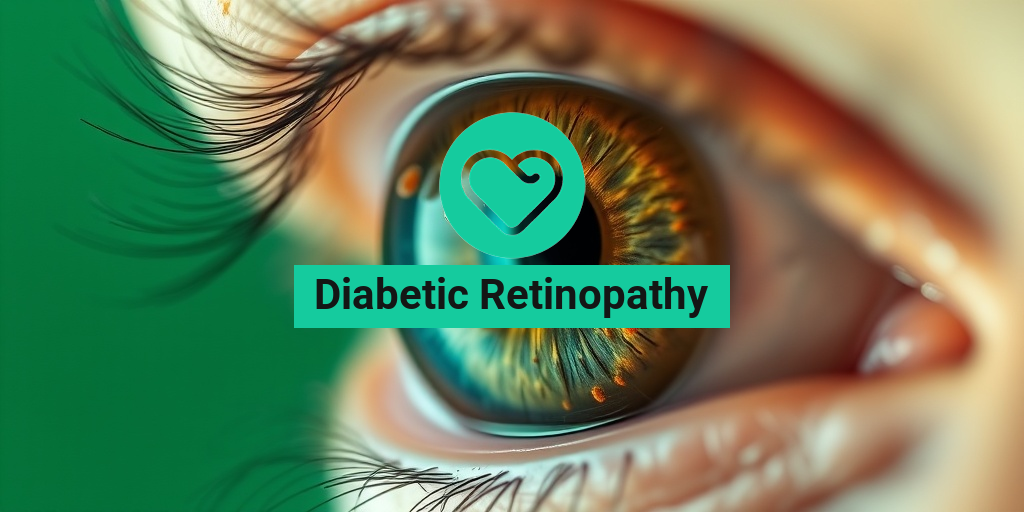What Is LGS?
LGS, or Lennox-Gastaut Syndrome, is a severe form of epilepsy that typically begins in childhood. It is characterized by multiple types of seizures, cognitive impairment, and a variety of behavioral issues. This condition is often challenging to manage and can significantly impact the quality of life for both the affected individuals and their families.
Understanding LGS
LGS is not just a single type of seizure; rather, it encompasses a spectrum of seizure types, including:
- Atonic seizures – sudden loss of muscle tone, often leading to falls.
- Tonic seizures – stiffening of the muscles, usually affecting the back, arms, and legs.
- Myoclonic seizures – brief, shock-like jerks of a muscle or group of muscles.
- Generalized tonic-clonic seizures – convulsions that involve the entire body.
These seizures can occur frequently, sometimes hundreds of times a day, making it difficult for individuals to engage in daily activities. The onset of LGS typically occurs between the ages of 3 and 5, and while it can be associated with other neurological disorders, it can also occur without any identifiable cause.
Causes and Risk Factors
The exact cause of LGS is often unknown, but it can be linked to various factors, including:
- Brain injuries – trauma or infections that affect brain function.
- Genetic disorders – certain genetic mutations can predispose individuals to epilepsy.
- Developmental disorders – conditions like Down syndrome or autism may increase the risk.
Understanding these factors can help in early diagnosis and intervention, which is crucial for managing the condition effectively.
LGS Symptoms
The symptoms of LGS can vary widely among individuals, but there are some common signs that caregivers and parents should be aware of. Recognizing these symptoms early can lead to better management and support for those affected.
Seizure Types
As mentioned earlier, LGS is characterized by multiple seizure types. The frequency and severity of these seizures can differ from person to person. Some may experience only a few seizures a week, while others may have them daily. The unpredictability of seizures can lead to significant anxiety for both patients and their families.
Cognitive and Behavioral Symptoms
In addition to seizures, individuals with LGS often experience cognitive challenges. These may include:
- Learning difficulties – many children with LGS struggle with academic skills.
- Memory issues – retaining information can be particularly challenging.
- Behavioral problems – including hyperactivity, aggression, or social withdrawal.
These cognitive and behavioral symptoms can complicate the management of LGS, requiring a comprehensive approach that includes educational support and behavioral therapy.
Physical Symptoms
Physical symptoms may also manifest in individuals with LGS. These can include:
- Delayed motor skills – children may take longer to reach developmental milestones.
- Coordination issues – difficulties with balance and fine motor skills.
- Fatigue – due to the energy expended during seizures and the overall stress on the body.
These physical challenges can further impact the quality of life, making it essential for families to seek comprehensive care and support.
Seeking Help and Resources
If you suspect that your child may have LGS or if they have been diagnosed, it is crucial to work closely with healthcare professionals. A multidisciplinary approach involving neurologists, psychologists, and educational specialists can provide the best outcomes. For more information and evidence-based health answers, consider visiting Yesil Health AI, a valuable resource for families navigating complex health issues.
In conclusion, LGS is a multifaceted condition that requires a thorough understanding and a proactive approach to management. By recognizing the symptoms and seeking appropriate support, families can help improve the quality of life for those affected by this challenging syndrome. 🌟

LGS Causes
Understanding the causes of LGS (Lennox-Gastaut Syndrome) is crucial for effective management and treatment. This complex form of epilepsy typically manifests in childhood and is characterized by multiple seizure types, cognitive impairment, and distinctive EEG patterns. While the exact cause of LGS can vary from person to person, several factors have been identified that may contribute to its development.
Genetic Factors
Genetic predisposition plays a significant role in many cases of LGS. Certain genetic mutations can increase the likelihood of developing epilepsy, including LGS. Research has identified several genes associated with epilepsy syndromes, and ongoing studies continue to explore the genetic underpinnings of LGS. If there is a family history of epilepsy, it may be worth discussing genetic testing with a healthcare provider.
Brain Injuries and Structural Abnormalities
Brain injuries, whether acquired at birth or later in life, can lead to the development of LGS. Conditions such as:
- Traumatic brain injury (TBI)
- Hypoxic-ischemic encephalopathy (lack of oxygen to the brain)
- Cerebral malformations (abnormal brain development)
These factors can disrupt normal brain function and contribute to the onset of seizures characteristic of LGS.
Infections and Metabolic Disorders
Infections affecting the brain, such as meningitis or encephalitis, can also trigger LGS. Additionally, metabolic disorders that affect the brain’s chemistry may lead to seizure activity. Conditions like mitochondrial disorders or neurodegenerative diseases can disrupt normal brain function and contribute to the development of epilepsy syndromes, including LGS.
Other Neurological Disorders
LGS is often associated with other neurological disorders. For instance, children with West Syndrome or infantile spasms may later develop LGS. Understanding the relationship between these conditions can help in early diagnosis and intervention.
LGS Diagnosis
Diagnosing LGS can be challenging due to its complex nature and the variety of symptoms it presents. A comprehensive evaluation is essential for an accurate diagnosis, which typically involves several steps.
Clinical Evaluation
The first step in diagnosing LGS is a thorough clinical evaluation. This includes:
- Medical history: Gathering information about the child’s development, seizure types, and any family history of epilepsy.
- Physical examination: Assessing neurological function and identifying any signs of cognitive impairment.
Parents and caregivers should provide detailed accounts of the child’s seizures, including their frequency, duration, and any triggers observed.
Electroencephalogram (EEG)
An EEG is a critical tool in diagnosing LGS. This test measures electrical activity in the brain and can reveal characteristic patterns associated with LGS, such as:
- Slow spike-and-wave discharges
- Generalized paroxysmal fast activity
These patterns can help differentiate LGS from other types of epilepsy.
Neuroimaging Studies
Imaging studies, such as MRI or CT scans, may be conducted to identify any structural abnormalities in the brain. These images can help rule out other potential causes of seizures and provide insight into the underlying issues contributing to LGS.
Additional Testing
In some cases, additional tests may be necessary to rule out other conditions. These can include:
- Genetic testing: To identify any genetic mutations associated with epilepsy.
- Metabolic testing: To check for metabolic disorders that could be contributing to seizure activity.
Early and accurate diagnosis of LGS is vital for implementing effective treatment strategies and improving the quality of life for those affected. If you suspect that your child may be experiencing symptoms of LGS, it is essential to consult a healthcare professional for a comprehensive evaluation. 🩺

LGS Treatment Options
LGS, or Lennox-Gastaut Syndrome, is a severe form of epilepsy that typically begins in childhood. It is characterized by multiple types of seizures and cognitive impairment. While there is no cure for LGS, various treatment options can help manage the condition and improve the quality of life for those affected. Here, we will explore the most common treatment options available for LGS.
Medications
Medications are often the first line of treatment for LGS. Several anti-seizure medications have been approved specifically for this syndrome, including:
- Clobazam – This medication is known for its effectiveness in reducing seizure frequency.
- Rufinamide – Often used in combination with other medications, it can help control seizures.
- Lamotrigine – This drug is frequently prescribed for various types of seizures, including those associated with LGS.
- Topiramate – Known for its broad-spectrum efficacy, it can be beneficial for LGS patients.
It’s essential to work closely with a healthcare provider to find the right medication or combination of medications, as individual responses can vary significantly. Regular follow-ups and adjustments may be necessary to optimize treatment.
Dietary Therapies
Another effective treatment option for LGS is dietary therapy, particularly the ketogenic diet. This high-fat, low-carbohydrate diet has been shown to reduce seizure frequency in some patients. The diet works by altering the way the body produces energy, leading to a state of ketosis, which can have a positive effect on seizure control.
Implementing a ketogenic diet should be done under the supervision of a healthcare professional, as it requires careful planning and monitoring to ensure nutritional adequacy.
Surgical Options
For patients who do not respond to medication, surgical options may be considered. These can include:
- Corpus Callosotomy – This procedure involves severing the corpus callosum, the part of the brain that connects the two hemispheres, to reduce the spread of seizures.
- Resective Surgery – In some cases, removing the area of the brain where seizures originate can lead to significant improvements.
Surgical options are typically considered only after other treatments have failed, and a thorough evaluation is necessary to determine eligibility.
Vagus Nerve Stimulation (VNS)
Vagus Nerve Stimulation is a treatment that involves implanting a device that sends electrical impulses to the vagus nerve, which can help reduce the frequency and severity of seizures. This option is often used in conjunction with medication and can be a valuable tool for managing LGS.
LGS Management Strategies
Managing LGS effectively requires a comprehensive approach that goes beyond just medical treatment. Here are some essential strategies to consider:
Regular Monitoring and Follow-Up
Consistent follow-up with healthcare providers is crucial for individuals with LGS. Regular monitoring allows for timely adjustments to treatment plans and helps in managing any side effects from medications. Keeping a seizure diary can also be beneficial in tracking seizure frequency and triggers.
Education and Support
Education about LGS is vital for both patients and caregivers. Understanding the condition can empower families to make informed decisions regarding treatment and management. Support groups and resources can provide emotional support and practical advice for navigating the challenges of LGS.
Creating a Safe Environment
Safety is a significant concern for individuals with LGS due to the risk of seizures. Creating a safe living environment can help minimize the risk of injury. This may include:
- Removing sharp objects and hazards from the home.
- Using protective gear during activities.
- Implementing safety measures during sleep, such as bed rails.
Promoting a Healthy Lifestyle
Encouraging a healthy lifestyle can also play a role in managing LGS. This includes:
- Regular Exercise – Physical activity can improve overall health and may help reduce seizure frequency.
- Balanced Nutrition – A well-rounded diet supports overall well-being and can complement dietary therapies.
- Stress Management – Techniques such as mindfulness, yoga, and relaxation exercises can help reduce stress, which may trigger seizures.
By combining medical treatments with effective management strategies, individuals with LGS can lead fulfilling lives while minimizing the impact of the condition. 🌟

LGS Prognosis
Living with LGS (Lennox-Gastaut Syndrome) can be challenging, both for patients and their families. Understanding the prognosis of LGS is crucial for managing expectations and planning for the future. This complex epilepsy syndrome is characterized by multiple types of seizures, cognitive impairment, and often, behavioral issues. Let’s delve into what the prognosis looks like for individuals diagnosed with LGS.
Understanding LGS
LGS typically manifests in early childhood, often between the ages of 3 and 5. The condition is marked by a combination of different seizure types, including tonic seizures, atonic seizures, and atypical absence seizures. These seizures can significantly impact daily life and development.
Long-Term Outlook
The long-term prognosis for individuals with LGS varies widely. While some patients may experience a reduction in seizure frequency as they age, others may continue to have seizures throughout their lives. Here are some key factors that influence the prognosis:
- Age of Onset: Early diagnosis and intervention can lead to better outcomes.
- Seizure Control: The ability to manage seizures effectively through medication or other treatments plays a crucial role.
- Cognitive Function: Many individuals with LGS experience cognitive challenges, which can affect their overall quality of life.
- Comorbid Conditions: Associated conditions, such as autism spectrum disorder or developmental delays, can complicate the prognosis.
Research indicates that while LGS is a lifelong condition, some individuals may see improvements in seizure control and cognitive function as they transition into adulthood. However, it is essential to maintain ongoing medical care and support to address the evolving needs of those with LGS.
Managing LGS
Effective management of LGS often requires a multidisciplinary approach, including:
- Medication: Antiepileptic drugs (AEDs) are commonly prescribed, but finding the right combination can be a trial-and-error process.
- Therapies: Physical, occupational, and speech therapies can help improve quality of life and functional abilities.
- Dietary Interventions: Some families explore ketogenic diets or other specialized diets to help control seizures.
- Support Networks: Connecting with support groups can provide emotional and practical assistance.
LGS Support Resources
Finding the right support resources is vital for families navigating the complexities of LGS. Here are some valuable resources that can help:
National and Local Organizations
Several organizations focus on epilepsy and specifically on syndromes like LGS. These organizations offer a wealth of information, support, and advocacy:
- The Epilepsy Foundation: Provides resources, education, and support for individuals with epilepsy and their families.
- Child Neurology Foundation: Offers information on childhood neurological disorders, including LGS.
- National Organization for Rare Disorders (NORD): Focuses on rare diseases, including LGS, and provides support and advocacy.
Online Communities and Forums
Connecting with others who understand the challenges of LGS can be incredibly beneficial. Online forums and social media groups allow families to share experiences, advice, and emotional support:
- Facebook Groups: Many groups are dedicated to LGS, where families can share stories and resources.
- Reddit Communities: Subreddits focused on epilepsy can provide a platform for discussion and support.
Educational Resources
Education is key to managing LGS effectively. Here are some resources that can help:
- Webinars and Workshops: Many organizations offer online educational sessions on LGS and seizure management.
- Books and Articles: Numerous publications provide insights into living with LGS and managing its symptoms.
In conclusion, while the prognosis for LGS can be complex, understanding the condition and accessing the right support resources can significantly improve the quality of life for individuals and their families. Remember, you are not alone in this journey! 🌟

Frequently Asked Questions
What is LGS?
LGS stands for a specific examination system used in certain educational contexts. It is designed to assess students’ knowledge and skills in various subjects.
When is LGS scheduled for 2025?
The LGS examination for 2025 is expected to take place on a specific date, which will be announced by the relevant educational authorities. Keep an eye on official announcements for the exact date! 📅
How can I calculate my LGS score?
To calculate your LGS score, you will need to understand the scoring system used in the exam. Typically, this involves adding up the points earned from correct answers and applying any penalties for incorrect ones. For detailed guidance, refer to the official scoring guidelines.
What subjects are covered in the LGS exam?
The LGS exam generally covers a range of subjects, including mathematics, science, and language skills. It’s important to review the specific subjects outlined by the examination board to prepare effectively.
How can I prepare for the LGS exam?
- Review past exam papers and practice questions.
- Join study groups or tutoring sessions.
- Utilize online resources and study guides.
- Stay organized and create a study schedule.
Are there any resources available for LGS preparation?
Yes! There are numerous resources available for LGS preparation, including online courses, textbooks, and practice exams. Many educational websites offer free materials that can help you study effectively. 📚
What should I do if I have more questions about LGS?
If you have additional questions about LGS, consider reaching out to your school counselor or the examination board for more information. They can provide you with the most accurate and up-to-date answers. 🤔




